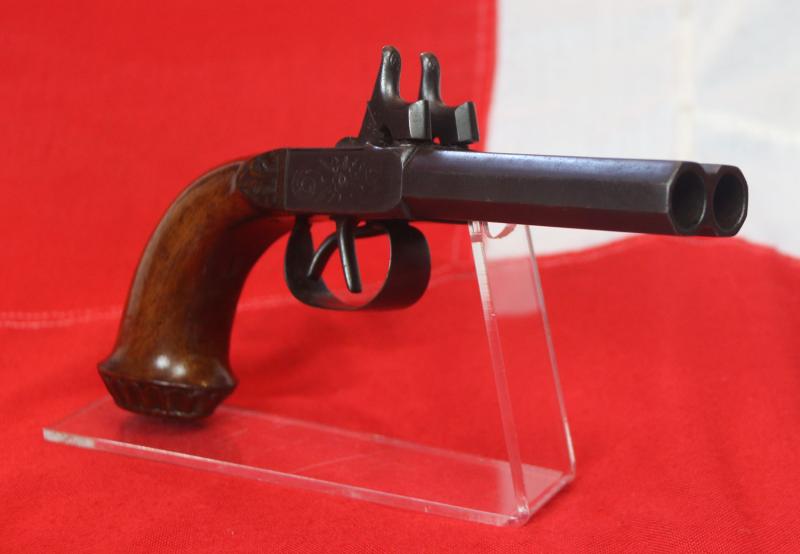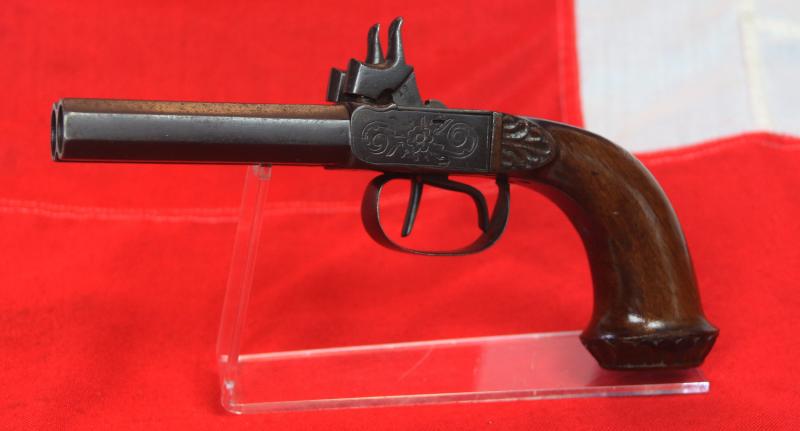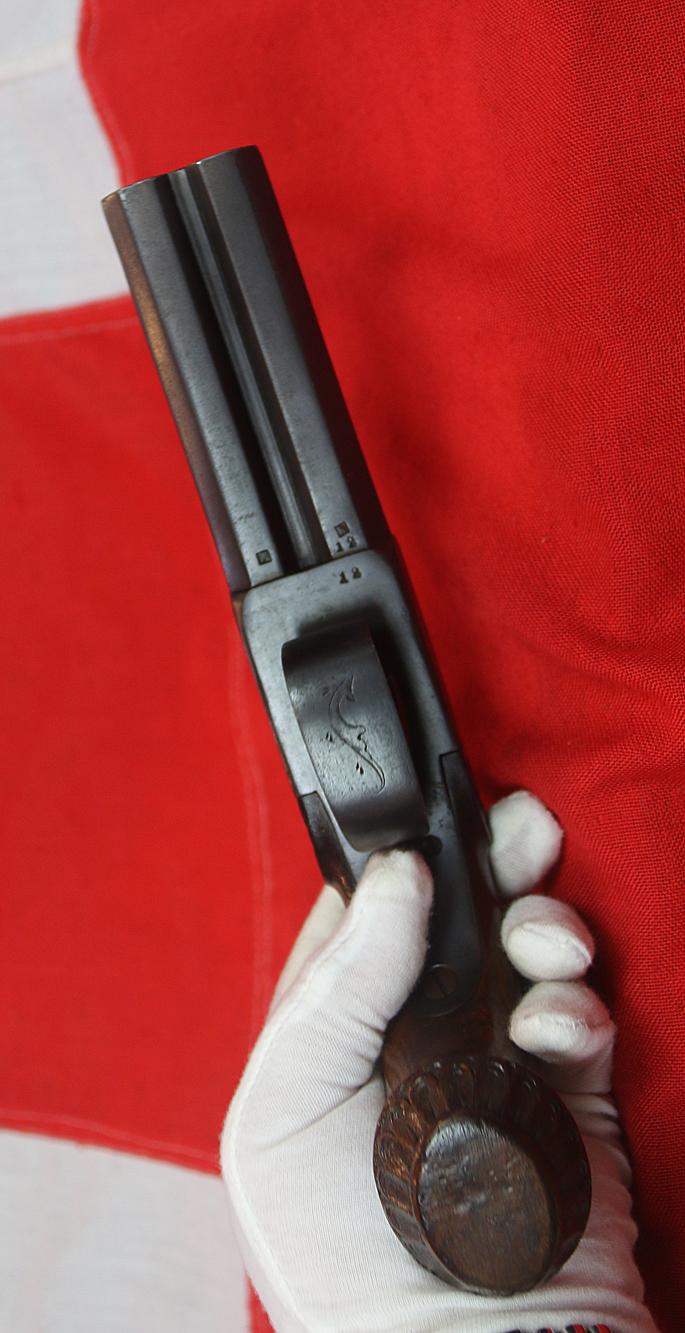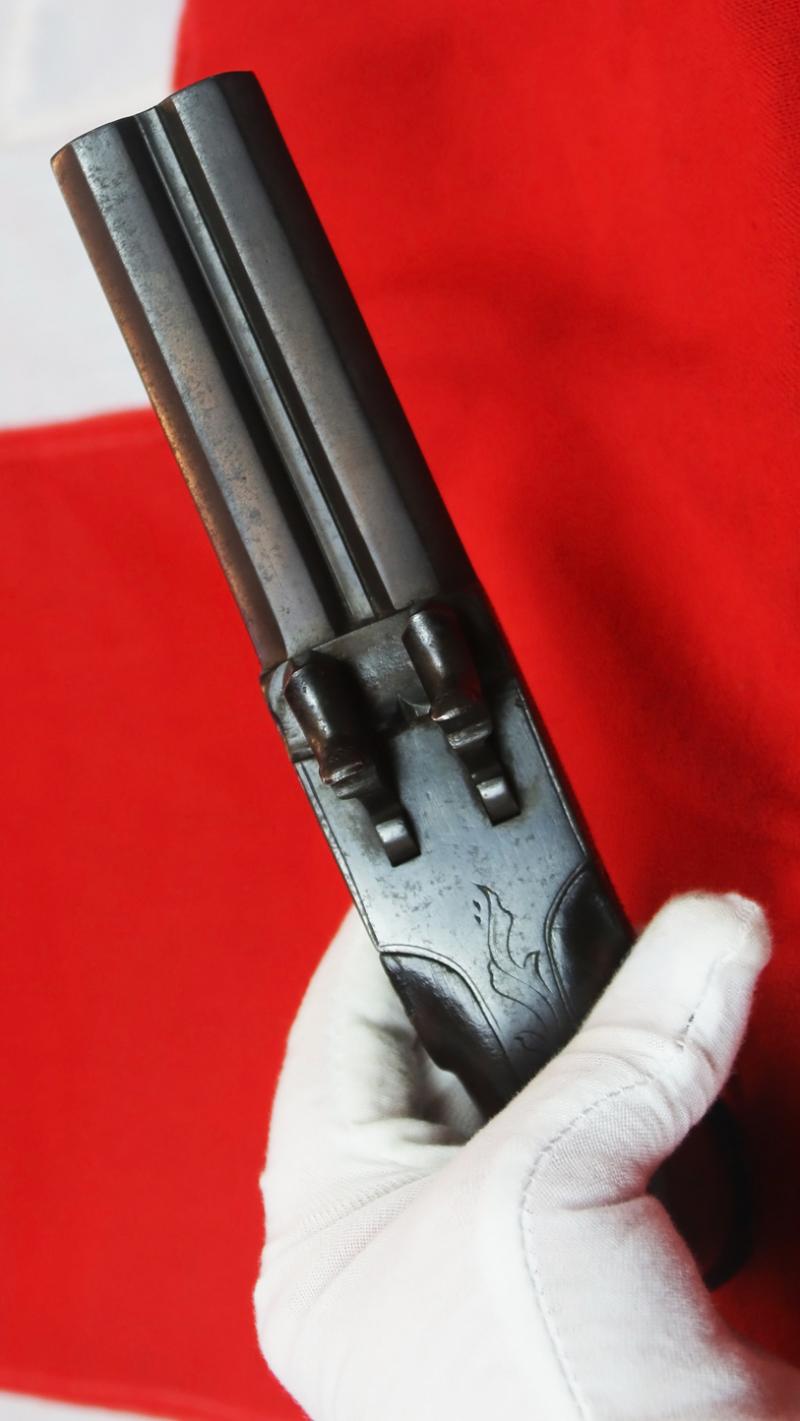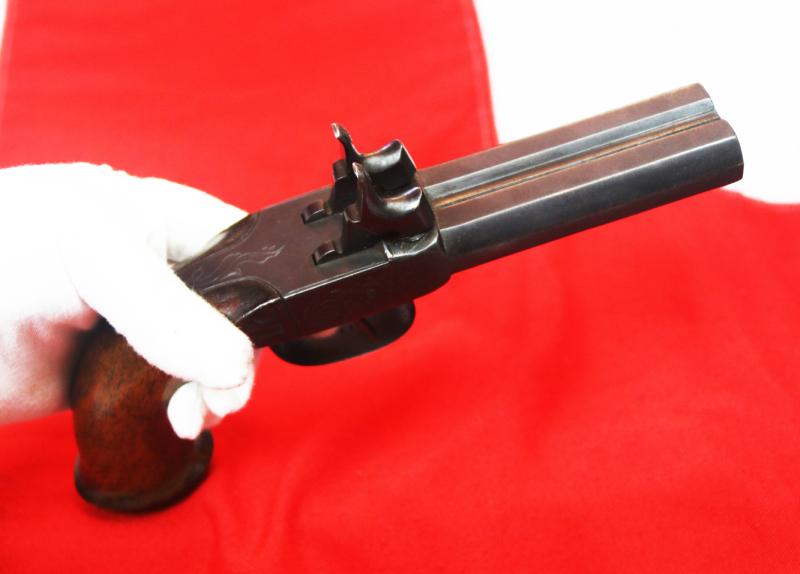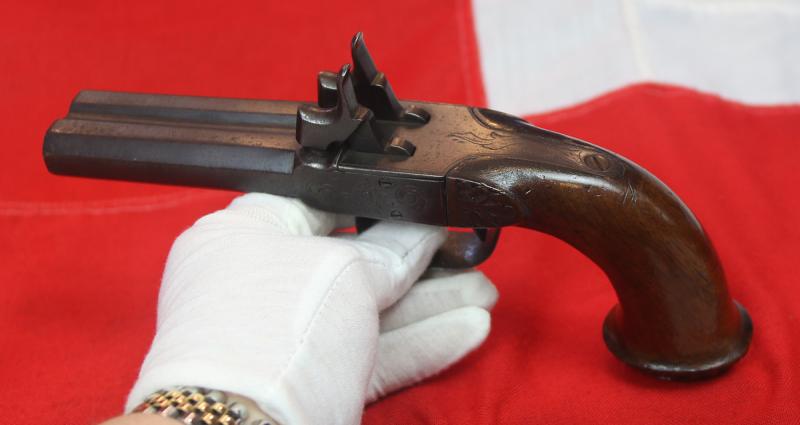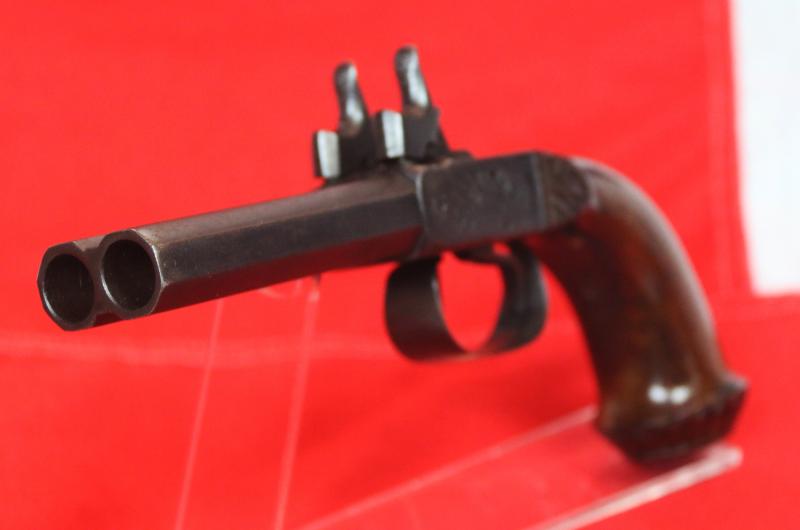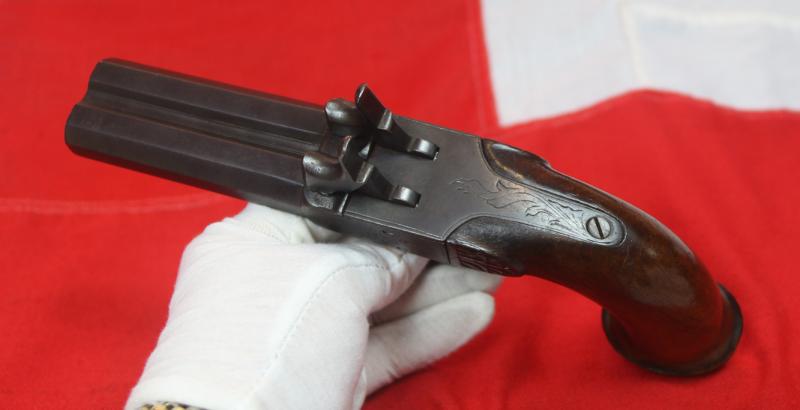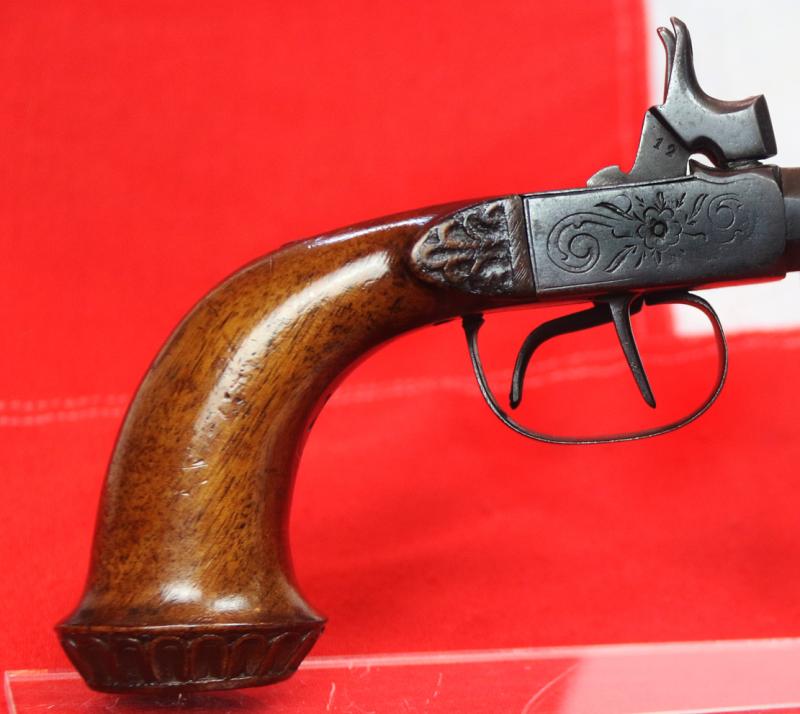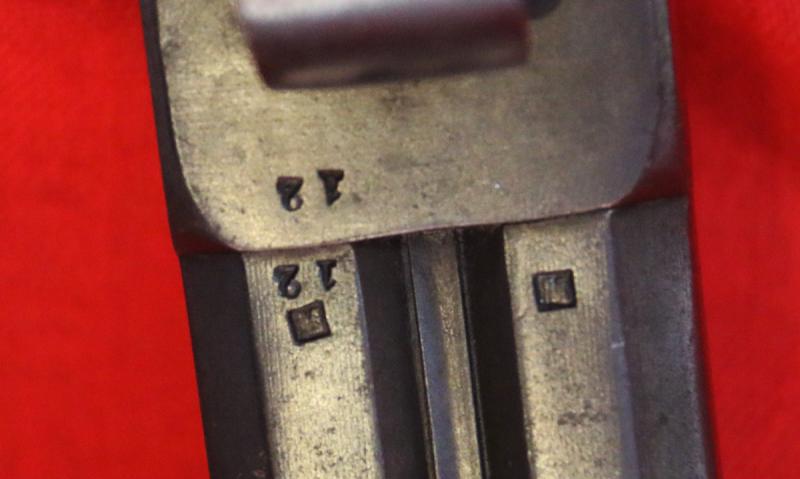A Very Fine, Good Quality, 1840's, Double-Barrel, Side-By-Side, Manstopper or Howdah, Percussion Pistol, In Excellent Condition
Poincon stamped barrels, probably French, in which case by Francois Manceaux, French proof master of Tulle circa 1840. His {pair of} poincon, are proof stamps of the letter M beneath the barrels at the breech. Very good tight and crisp twin actions.
An incredibly impressive and beautiful large bore double barrelled pistol, 15mm calibre, with fine carved wooden grip. Superb condition overall with blueing. Beautifully flower and acanthus leaf scroll engraved boxlock frame, and trigger guard.
The howdah pistol was a large-calibre handgun, often with two or four barrels, used in India and Africa in the mid-to-late-nineteenth and early-twentieth centuries, during the period of British Colonial rule. It was typically intended for defence against tigers, lions, and other dangerous animals that might be encountered in remote areas. Multi-barreled designs were initially favoured for Howdah pistols because they offered faster reloading than was possible with contemporary revolvers, which had to be loaded and unloaded through a gate in the side of the frame.
The term "howdah pistol" comes from the howdah, a large saddle mounted on the back of an elephant. Hunters, especially during the period of the British Raj in India, used howdahs as a platform for hunting wild animals and needed large-calibre side-arms for protection from animal attacks.
English firearms makers manufactured specially-designed howdah pistols in the later 19th century and early 20th century, in both rifle calibres, and more conventional handgun calibres, such as .455 Webley and .476 Enfield. As a result, the term "howdah pistol" is often applied to a number of English multi-barrelled handguns such as the Lancaster pistol (available in a variety of calibres from .380" to .577"), and various .577 calibre revolvers produced in England and Europe for a brief time in the mid-late 19th century. By all accounts this lofty sanction was far from secure and a range of emergency weapons has been carried in the howdah to be pressed into service in the not-unlikely event (apparently!) of a tiger attempting to leap onto the back of an elephant in order to attack the hunters in the howdah. No doubt swords and short jobbing-spears served this purpose relatively well enough in the very early days, however, a large-bore single-barrel or side-by-side double-barrelled pistols was far more effective, and had taken over as outright favourites by the mid-1800s.
Ranging from percussion dragoon-pistols or side-by-side muzzle-loaders early on, to break-open breech-loading handguns usually built on a rotary or snap-action under-lever design, these specialised heavy side-arms were usually sheathed on or in the howdah within easy reach of the occupant, or holstered on the hunter's person for instant accessibility in the gravest extreme!
Even though howdah pistols were designed for emergency defence from dangerous animals in Africa and India, British officers adopted them for personal protection in other far-flung outposts of the British Empire. By the late 19th century, top-break revolvers in more practical calibres (such as .455 Webley) had become widespread, removing much of the traditional market for howdah pistols.
No licence required antique collectors item only, not for sale to under 18's.
Code: 24896
895.00 GBP

